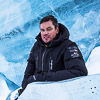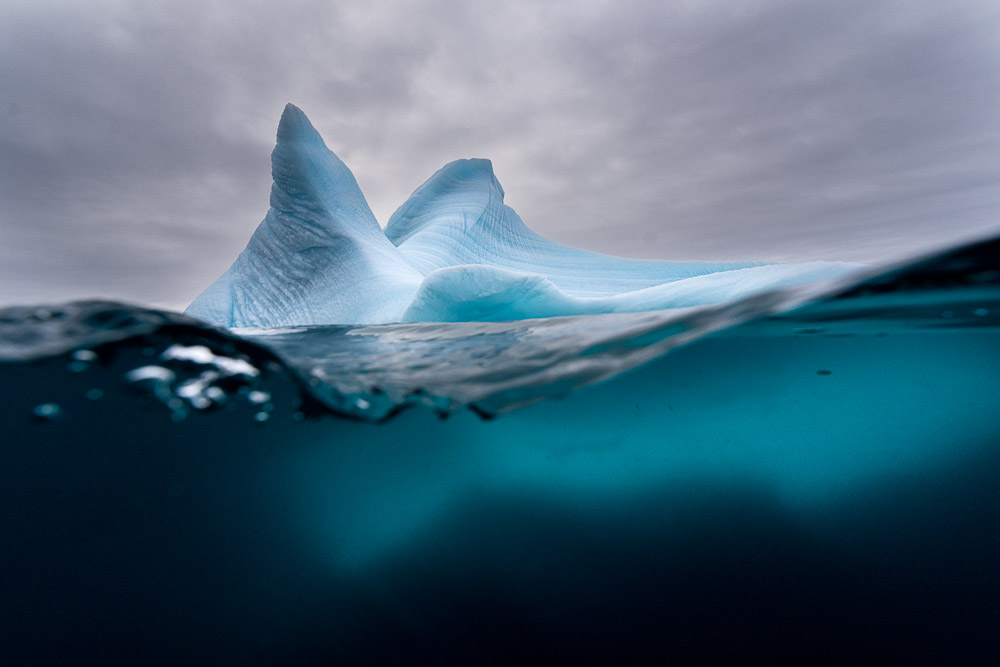Svalbard Photo Tours & Expeditions
Svalbard is one of the highlights of the Arctic, mainly due to the magnificent landscape that greets you. With peaks 1700 metres high, mighty glaciers, fjords, and valleys, many people fall in love with this place. The permafrost and Arctic climate characterise the landscape, but because of the warm Gulf Stream, the land is not as frozen and desolate as you might expect. In addition, the plants, birds, and animals give life to the landscape and make it well worth exploring and photographing.
Svalbard is an area of 61,022 square km distributed on the islands of Spitsbergen, Nordaustlandet, Edgeøya, Barentsøya, Kvitøya, Prins Karls Forland, and Kong Karls Land as well as several smaller islands. The archipelago is ruled by Norwegian law and is located halfway between mainland Norway and the North Pole. The northernmost settlement in the Arctic is Longyearbyen - at 78 degrees North - with about 2400 citizens. WildPhoto Travel has been a local company in Longyearbyen since 2013.
 | Text & Photo by Ole J Liodden Last updated: 30.04 2025 |
Seasons in Svalbard
We often get the question: When is the best time to visit Svalbard? The answer depends on your interests, desired light conditions, and whether you are primarily a landscape or wildlife photographer (or both). For photography, Svalbard offers five different seasons between mid-March and mid-October, each with its own unique appeal. To explore each season in detail, click on the images or buttons below,or you can scroll down to discover the photographic specialties of each season and the Arctic wildlife and landscapes you can photograph in Svalbard.
Svalbard Winter Extreme
In March there are dark nights and possibilities for Aurora, but the nights are getting shorter and lighter. You can enjoy long sunrises and sunsets with soft orange, yellow and pink colours in combination with grades of blue. Adding a stunning backdrop of snow-covered mountains, you will have plenty of photo opportunities. There are less birds and animals to photograph in the winter season, before the migrants arrive. With more sea ice, the polar bears, walruses and seals have more space to spread out on, and are more difficult to find. However, when a polar bear is passing by our ship or zodiac, or a walrus is resting on the sea ice, the photo opportunities might be extraordinary.

Svalbard in March © Ole J Liodden
Svalbard Winter Glow
Mid April is the time when the midnight sun is returning to Svalbard. With no nights (dark hours) the photo opportunities are almost 24 hours a day. The low midnight sun is sometimes hidden behind the mountains, but the colours in red and orange are getting stronger and the light conditions can be truly magical. The landscape and mountains are still covered with snow, and migratory birds start returning back to Svalbard. With less sea ice it is easier to see polar bears, and if you are lucky it is possible to see a Polar bear mother with cubs. From the beginning of May it might also be possible to access more remote areas in Svalbard - like Hinlopen in eastern parts of the archipelago.

Polar bear in late April © Ole J Liodden
Svalbard Spring Awakening
From mid May the transition from winter to early summer starts. The birds are moving into breeding mode and there is a lot of life and activity - especially in June. The snow melts and gives space for green patches where short-grown flowers will bloom from the second half of June. With Warmer temperatures and sun 24 hours a day, the sea ice is breaking up in the fjords leaving less areas for Polar bears to hunt seals. Less sea ice also allows expedition ships like MS Virgo to explore more areas to the northeast of Spitsbergen, which can be very interesting to explore.

Polar bear in June © Ole J Liodden
Svalbard Summer Dream
In mid-July the sea ice around Svalbard is retreating, forming a gap between the islands and the drifting sea ice. In the following weeks some Polar bears and seals are following the pack ice north, while the remaining animals have to stay on land without sea ice. Most of the seabirds are leaving their nesting areas in the first half of August, but there are still many birds to photograph. The light conditions are improving toward the end of August with more orange colours at night. In the last week of August the midnight sun disappears from the high Arctic.

Polar bear in the pack ice © Ole J Liodden
Svalbard Autumn Magic
The midnight sun is gone from last week in August, and the high Arctic is now appealing for wildlife and landscape photographers searching for great light. Polar bears are now up north in the drifting pack ice, or found mainly resting on the shorelines or small islands of Svalbard. They are waiting for the sea to freeze-up in November and December, giving the ice platform necessary for hunting seals. September is the peak season for the whales - Blue whale, Fin whale, Humpback whale, Minke whale and White-beaked dolphins which are usually found in good numbers this time of the year. At the end of this season there might be chances for snow in the mountains, and pancake ice at sea.

Blue whale in September © Ole J Liodden
Svalbard Below Surface
The underwater world in Svalbard is amazing with unique photo opportunities of sea ice, icebergs, seabirds and sea mammals. Few photographers have had the chance to do snorkelling or polecam photography in Svalbard, and this Below Surface expedition is designed for photographers who want to explore and photograph with underwater cameras. We offer the opportunity to snorkel with your camera or use polecam systems from the Zodiacs or the side of our expedition ship.

Ice berg photographed with UW-housing and polecam © Ole J Liodden
What to photograph in Svalbard
Svalbard is a high-quality destination for landscape and wildlife photographers. Polar bears are the main target for many photographers visiting the archipelago, but Svalbard has much more to offer. Walruses, seals, and whales can be photographed at sea, and Arctic foxes and Svalbard reindeer are locally common on land. In addition, the birdlife in Svalbard is overwhelming with thousands of seabirds, like guillemots, auks, gulls, and terns. These animals and birds are surrounded by the unique landscape in Svalbard with impressive mountains and glaciers. If you are interested in photography, you will appreciate the photo opportunities in Svalbard.
Polar Bear Photography Tours & Expeditions
Many of our guests and partners have polar bears as their primary photographic target when booking ship-based photography expeditions to Svalbard. Our expert guide team at WildPhoto Travel specialises in locating polar bears and organising the photography in a safe and respectful manner. Learn more about polar bear photography on our Polar Bear Photography Tours or How to Photograph Polar Bears webpages, or explore one of the expedition dates below. We are passionate about polar bears, and we will do everything possible (within Svalbard's laws and regulations) to provide memorable polar bear encounters and photography opportunities.
Why travel to Svalbard with WildPhoto
At WildPhoto Travel, our mission is to inspire and connect passionate nature photographers with some of the world's most breathtaking and remote destinations. We strive not only to help you bring home stunning images but also to deepen your appreciation for the natural world. Our Arctic photo expeditions are renowned for delivering great experiences and photographic opportunities. Here are seven reasons why WildPhoto Travel should be your top choice for your next adventure to Svalbard:
If you have any questions about photography in Svalbard or or want to book a spot on one of our WildPhoto expeditions to Svalbard, feel free to contact us at booking@wildphoto.com.
WildPhoto Travel is a leading photo expedition company - specialized in polar regions. Since 2006, we have offered great photo opportunities for our guests and partners.


